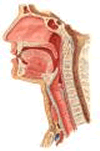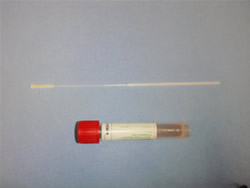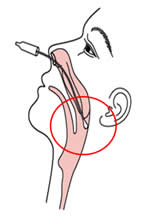

6th Floor, Clinic Bldg.
2799 West Grand Blvd.
Detroit, MI 48201
(313) 916-2964
Specimen Transportation


|
|
| |
  |
 |
 |
|

|
|
|
Nasopharyngeal Swab for rapid Influenza A/B test and Influenza PCR
Materials and supplies needed
- PPE: gloves, mask, and eye protection
- Flocked nasopharyngeal swab
- Red Top Viral Transport Tube or Red Top COPAN NP Collection Device

| Specimen Collection Instructions |
|
- Ensure that patient information is correct on the order form and the transport tube and that you have the correct patient.
- The specimen should be collected with a per-nares nasopharyngeal (NPS) swab. Only flocked swabs should be used.
- Tilt patients head back approximately 70 degrees and raise the tip of the nose.
- Gently insert swab into the nares pushing back (not up) until there is a slight resistance as the swab reaches the posterior nasal pharynx (this is approximately the same distance as from the nares to the opening of the ear.)
- Rotate the swab several times. Although a contact time of 10 seconds is advocated, in practice a few seconds of contact often induces coughing or patient resistance, either of which is adequate incentive to remove the swab.
- Remove the RED cap from the transport tube, insert swab, and replace cap.
- Place the tube in a biohazard bag and transport ASAP to the lab for testing.
|
 |
| |
|
Nasopharyngeal Aspirate
1. Connect a sterile suction catheter of size 6 or 8 French to a Lukens trap
and vacuum pump or use a syringe attached to a small plastic tube.
2. Immobilize the patient’s head.
3. Gently insert the end of the catheter along the floor of the nasopharynx
to the posterior pharynx until resistance is encountered. Insertion may induce
coughing and tearing.
4. Apply suction by vacuum pump or syringe when the posterior pharynx is reached
and maintain suction as the catheter is slowly withdrawn to the middle of the
nasal cavity.
5. Discontinue suction and remove the catheter.
6. Flush the catheter by aspirating 0.5-1.0 mls of nonbacteriostatic saline
through the catheter into the trap or syringe.
7. Seal the ends of the trap or syringe.
Nasopharyngeal Wash
1. Connect a sterile suction catheter of size 6 or 8 French to a Lukens trap
and vacuum pump or use a syringe containing 3-5 mls nonbacteriostatic saline
attached to a small plastic tube.
2. Immobilize the patient’s head.
3. Gently insert the end of the catheter along the floor of the nasopharynx
to the posterior pharynx. Insertion may induce coughing and tearing.
4. After placing the nonbacteriostatic saline in the nose, aspirate as much
of the material as possible by applying suction by vacuum pump or syringe when
the posterior pharynx is reached and maintain suction as the catheter is slowly
withdrawn to the middle of the nasal cavity.
5. Discontinue suction and remove the catheter.
6. Flush the catheter by aspirating 0.5-1.0 mls of nonbacteriostatic saline
through the catheter into the trap.
7. Seal the ends of the trap.
|
|
 |
 |
 |
 |
 |
Last Modified:  Wednesday, July 12, 2023 3:05 PM
Wednesday, July 12, 2023 3:05 PM
|
|
| |
home | Accreditation/Certification
Information | mailing list | contact webmaster
LUG(Lab User's Guide) Copyright 2022 Henry Ford Health |
|
|
|





